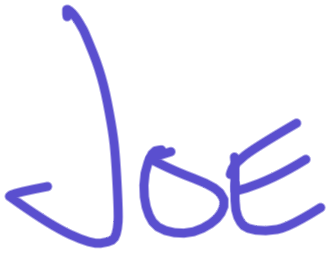Condition 009
Novelty isn’t distraction; it’s intelligence.
That which draws you forward often reveals something
that your planning mind hasn’t figured out yet.
If you want to know the real Joe, you need to know this: the real Joe doesn’t like doing the same thing over and over again. The real Joe likes to experiment.
Like this:
That activity reminds me of a maxim that I really appreciate: Follow the Novelty.
Whether it’s a creative act or an exploration towards “delivering stakeholder value,” there is something wonderful (and productive) in following what is interesting to you. This isn’t carte blanche to just do whatever you feel like, there are limits and bounds, but I find more liberation in allowing myself to ask the question, “What do I want to do next?” instead of, “What is the right thing to do next?”

There is a nuanced difference here from the idea of “following your gut.” Following the novelty is similar—in that it relies on some self-knowing and trusting that what you are interested in is important outside of your own bubble of experience—and yet it is importantly different because it provides some bounds and meaning that “gut” doesn’t afford. Novelty gives you something concrete to follow, rather than just a more vague sense that something feels right or wrong.
Thanks for reading (and watching),


Confident Moves
Try this in less than 10 minutes:
Novelty Justification
Think of something you want to explore that feels like it’s pulling you away from what you’re “supposed” to be doing.
I chose the video at the top of this newsletter, here is my example.
- Recreate this simple layout on a blank piece of paper.
The letters don’t matter, just the basic structure with two columns and a connecting middle space. - In section A, describe what you want to do.
What is the specific thing that’s calling to you?
For me: “Make a video of myself creating a shitty map.” - In section B, explore what’s behind that impulse.
What draws you to this?
For me: “Trying new things, making while in a flow state, teaching using pictures.” - In section C, describe what you’re supposed to be doing.
What is the obligation or expectation you’re meant to fulfill?
For me: “Creating a newsletter.” - Next, explore the real purpose behind what you’re supposed to do in section D.
Why does that obligation exist?
For me: “Get thoughts out there, build an audience, and flesh out visualization ideas.” - Finally, use all those sections to find the bridge between your novelty and purpose, then write it in section E.
How might following your novelty (A) actually serve the deeper purpose (D)?
For me: “A quick video exploring a topic I’m passionate about would allow me to show my visualization concepts more clearly and quickly than writing about them, but would still allow people to understand my thoughts and help me flesh out my ideas.”
Notice what becomes visible when you map it out this way. Perhaps, like me, you’ll find that your interests are more aligned with your responsibilities than you previously thought.
